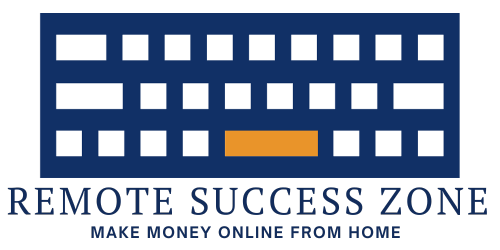Are you looking to maximize your profits through affiliate marketing? Look no further! In this article, we will explore the concept of conversion rate affiliate marketing. With a focus on driving conversions and generating revenue, we will provide valuable tips and strategies to help you succeed in this competitive industry. Whether you are just starting out or seeking to improve your current affiliate marketing efforts, this article is the perfect resource to elevate your business to new heights.

Understanding Conversion Rate in Affiliate Marketing
What is a conversion rate?
In the realm of affiliate marketing, a conversion rate refers to the percentage of website visitors who take a desired action, such as making a purchase, signing up for a newsletter, or completing a form. It is a crucial metric that determines the effectiveness and success of an affiliate marketing campaign.
Why is conversion rate important in affiliate marketing?
The conversion rate is a vital metric in affiliate marketing because it directly impacts the revenue generated by affiliates. A higher conversion rate means more successful referrals and more commissions earned. It also indicates the level of engagement and interest of the target audience in the promoted products or services.
How is conversion rate calculated?
To calculate the conversion rate, you need to divide the number of conversions by the total number of visitors and multiply the result by 100. The formula is as follows:
Conversion Rate = (Number of Conversions / Total Number of Visitors) * 100
For instance, if an affiliate generates 50 conversions from 1000 visitors, the conversion rate would be 5%.
Factors influencing conversion rate in affiliate marketing
Several factors can influence the conversion rate in affiliate marketing. These include the relevance of the offer to the target audience, the quality of the product or service being promoted, the attractiveness and usability of the affiliate’s website, the credibility and trustworthiness of the affiliate, and the effectiveness of the calls-to-action used.
Strategies to Improve Conversion Rate in Affiliate Marketing
Targeting the right audience
To improve conversion rates, it is crucial to target the right audience. Understanding the demographics, interests, and pain points of the target audience allows for more personalized and compelling marketing messages that resonate with their needs and desires.
Creating compelling content
Compelling content is key to capturing the attention and interest of potential customers. By providing valuable information, addressing pain points, and demonstrating expertise, affiliates can build trust and credibility with their audience, leading to higher conversion rates.
Providing quality recommendations
Affiliates should only recommend products or services that they genuinely believe in and have experienced firsthand. By providing honest and trustworthy recommendations, affiliates can establish credibility and increase the likelihood of conversions.
Optimizing landing pages
Landing pages play a crucial role in conversion rate optimization. They should be designed with a clear and enticing call-to-action, relevant and persuasive content, and a user-friendly layout. A/B testing different landing page elements can help identify the most effective optimizations.
Utilizing effective call-to-action
A compelling call-to-action (CTA) is essential for encouraging visitors to take the desired action. Affiliates should use persuasive language, create a sense of urgency, and ensure that the CTA is prominently displayed and easily accessible on their website.
Leveraging social proof
Social proof, such as customer testimonials, reviews, and case studies, can significantly influence conversion rates. By showcasing positive experiences and feedback from satisfied customers, affiliates can build trust and credibility, encouraging potential customers to convert.
Offering incentives or discounts
Providing incentives or discounts can be a powerful motivator for potential customers to take action. Affiliates can offer exclusive promotions, limited-time discounts, or freebies to entice visitors and increase conversion rates.
Implementing effective email marketing campaigns
Email marketing remains a highly effective strategy for engaging with potential customers. By nurturing leads through personalized and relevant content, affiliates can keep their brand top-of-mind and increase the likelihood of conversions.
Testing and optimizing
Continuous testing and optimization are essential for improving conversion rates. A/B testing different elements, such as headlines, visuals, and CTA placement, allows affiliates to identify the most effective strategies and refine their marketing approach.
Tracking and Analyzing Conversion Rate Performance
Setting up conversion tracking
Setting up conversion tracking is crucial for accurately measuring and analyzing conversion rates. Affiliates can use tracking codes, pixels, or conversion tracking tools provided by the affiliate network or tracking platforms to monitor conversions and attribute them to specific marketing efforts.
Utilizing analytics tools
Analytics tools, such as Google Analytics, provide invaluable insights into website performance, visitor behavior, and conversion rates. Affiliates can use these tools to identify trends, track the effectiveness of different marketing campaigns, and make data-driven decisions to optimize their conversion rates.
Key metrics to monitor
In addition to conversion rate, affiliates should also monitor other key metrics to gain a comprehensive understanding of their performance. These metrics include click-through rate (CTR), bounce rate, average order value, customer lifetime value, and return on investment (ROI).
Analyzing performance data
Regularly analyzing performance data is crucial for identifying areas of improvement and optimizing conversion rates. Affiliates should review conversion rate trends, analyze the impact of different marketing efforts, and identify any bottlenecks or obstacles in the conversion process.
Case Studies: Successful Conversion Rate Optimization in Affiliate Marketing
Case study 1: How Company X increased conversion rate by 50%
Company X, an affiliate marketing company specializing in beauty products, implemented several conversion rate optimization strategies to increase their conversion rate by 50%. By targeting a more specific audience segment, creating visually appealing content, and optimizing their landing pages, they were able to achieve impressive results.
Case study 2: Strategies used by Affiliate Marketer Y to achieve high conversion rate
Affiliate Marketer Y, who promotes health and wellness products, achieved a high conversion rate by leveraging social media influencers and providing authentic user-generated content as social proof. By partnering with influencers in the industry, they were able to reach a wider audience and build trust with their recommendations.
Case study 3: Conversion rate optimization techniques in the e-commerce affiliate industry
In the competitive e-commerce affiliate industry, utilizing effective promotional strategies, incorporating user-generated content, and providing seamless user experiences are key to optimizing conversion rates. By implementing personalized product recommendations, simplifying the checkout process, and offering responsive customer support, e-commerce affiliates can drive higher conversion rates.

Challenges and Roadblocks in Improving Conversion Rate in Affiliate Marketing
Understanding customer behavior
Understanding customer behavior can be challenging in affiliate marketing. Affiliates need to conduct thorough market research, gather data on customer preferences and pain points, and continuously adapt their strategies to align with changing customer needs.
Dealing with competition
Competition is inevitable in affiliate marketing, and affiliates need to find ways to differentiate themselves from others in the industry. By finding unique selling propositions, developing strong relationships with their audience, and continually improving their marketing approaches, they can overcome the challenges posed by competition.
Navigating ad blockers and privacy regulations
As ad blockers and privacy regulations become more prevalent, affiliates face challenges in reaching their target audience. Affiliates need to find alternative marketing channels, such as influencer marketing or content marketing, and ensure they comply with privacy regulations to maintain their conversion rates.
Addressing trust and credibility issues
Building trust and credibility with the audience is crucial for successful conversion rate optimization. Affiliates need to be transparent, provide accurate information, and maintain ethical marketing practices to overcome any trust issues that may arise.
Budget constraints
Budget constraints can limit the resources available for conversion rate optimization. Affiliates need to prioritize their efforts, focus on cost-effective strategies, and maximize the return on investment from their marketing activities.
Importance of A/B Testing in Conversion Rate Optimization
What is A/B testing?
A/B testing, also known as split testing, is a method of comparing two different versions of a webpage, email, or advertising campaign to determine which performs better in terms of conversion rates. It involves dividing the audience into two or more groups and presenting each group with a different version to measure the impact on conversion rates.
How does A/B testing help in improving conversion rate?
A/B testing allows affiliates to make data-driven decisions and optimize their marketing efforts. By comparing different variations of elements such as headlines, visuals, calls-to-action, or pricing, affiliates can identify the most effective strategies, eliminate underperforming elements, and continually improve their conversion rates.
Steps to conduct A/B tests
To conduct effective A/B tests, affiliates should follow a systematic process. This includes identifying the element to test, creating two or more versions to compare, dividing the audience into groups, running the test for a sufficient duration, and analyzing the results to determine the winning variation.
Best practices in A/B testing
To ensure accurate and reliable results from A/B testing, affiliates should follow best practices. These include testing one element at a time to isolate its impact, running tests for a sufficient duration to gather statistically significant data, and avoiding biases in the test setup or analysis.
Conversion Rate Benchmarks in Affiliate Marketing
Average conversion rates in different industries
Conversion rates can vary significantly depending on the industry and the type of product or service being promoted. While average conversion rates differ, industry benchmarks provide a reference point. For example, e-commerce websites typically have conversion rates ranging from 2% to 4%, while content websites may have lower conversion rates of around 1%.
Factors impacting industry-specific benchmarks
Several factors can impact industry-specific benchmarks, including the level of competition, the complexity of the product or service being promoted, the target audience’s purchasing behavior, and the quality of the marketing strategies employed.
Identifying and analyzing industry benchmarks
To determine a realistic conversion rate benchmark for an affiliate marketing campaign, it is essential to research and analyze industry-specific data. This can be done by studying case studies, analyzing competitor performance, and leveraging market research reports and insights.
Automation and Tools for Conversion Rate Optimization in Affiliate Marketing
Using chatbots and AI-powered tools
Chatbots and AI-powered tools can streamline the conversion rate optimization process by providing personalized recommendations, 24/7 customer support, and real-time data analysis. These tools can automate repetitive tasks, nurture leads, and enhance the user experience, ultimately improving conversion rates.
Conversion rate optimization platforms
Conversion rate optimization platforms offer comprehensive tools and features to track, analyze, and optimize conversion rates. These platforms provide A/B testing capabilities, heatmaps, user behavior tracking, and integration with other marketing tools, making it easier for affiliates to optimize their campaigns.
Heatmaps and user behavior tracking tools
Heatmaps and user behavior tracking tools provide visual representations of how visitors interact with a website, where their attention is focused, and which elements contribute to conversions. By analyzing these data, affiliates can make informed decisions to optimize their websites and increase conversion rates.
Conversion rate plugins and extensions for websites
Numerous plugins and extensions are available that specifically focus on conversion rate optimization for websites. These tools offer features such as exit-intent pop-ups, social proof notifications, countdown timers, and personalized recommendations, all aimed at increasing conversion rates.
Common Mistakes to Avoid in Conversion Rate Optimization
Ignoring mobile optimization
Failing to optimize websites for mobile devices can result in a poor user experience, slow loading times, and low conversion rates. Affiliates must ensure that their websites are responsive, user-friendly, and fast-loading on all devices to capitalize on the increasing mobile traffic.
Neglecting website performance and loading speed
Websites with slow loading speeds can lead to high bounce rates and lost conversions. Affiliates should optimize their websites by compressing images, minimizing code, and investing in reliable hosting to ensure fast and efficient website performance.
Mismanaging or neglecting A/B test results
Misinterpreting or neglecting A/B test results can hinder conversion rate optimization efforts. Affiliates should carefully analyze the data, draw accurate conclusions, and implement the winning variations to ensure continual improvement in conversion rates.
Lack of understanding user intent
Understanding user intent is crucial for creating relevant and persuasive content that resonates with the target audience. Affiliates should conduct keyword research, analyze search queries, and develop an understanding of the user’s mindset to better align their marketing messages and increase conversion rates.
Overcomplicating the conversion process
A complex and convoluted conversion process can deter potential customers from completing the desired action. Affiliates should streamline the conversion process, minimize form fields, and provide clear instructions to ensure a seamless and user-friendly experience.
Failing to align content with target audience
Creating content that does not resonate with the target audience can result in low engagement and conversion rates. Affiliates should conduct thorough market research, develop buyer personas, and tailor their content to address the specific needs, pain points, and preferences of their target audience.
Future Trends in Conversion Rate Optimization for Affiliate Marketing
AI-driven personalization
Artificial intelligence and machine learning technologies are revolutionizing conversion rate optimization by enabling personalized experiences, dynamic content recommendation, and predictive analytics. By leveraging AI-driven personalization, affiliates can deliver tailored marketing messages that increase engagement and drive conversions.
Voice search and conversational commerce
Voice search is becoming increasingly popular, creating new opportunities for affiliate marketers. Voice-activated devices and virtual assistants provide affiliates with the chance to optimize their content and marketing strategies for voice search, capturing users’ attention and increasing conversion rates through conversational commerce.
Augmented reality for enhanced user experience
Augmented reality (AR) allows users to interact with virtual objects in real-world environments, creating immersive and engaging experiences. Affiliates can leverage AR technology to provide users with virtual try-on experiences, interactive product demonstrations, and enhanced visualization, ultimately boosting conversion rates.
Integration of social media and affiliate marketing
The integration of social media and affiliate marketing is a growing trend that enables affiliates to leverage the massive reach and engagement of social platforms. By developing strategic partnerships with influencers, running targeted social media ads, and utilizing social commerce features, affiliates can reach a wider audience and drive conversion rates.
Micro-moments: Capitalizing on instant customer needs
Micro-moments, defined as the instant when users turn to their devices to satisfy a specific need, present opportunities for affiliates to capture customer attention and drive conversions. By providing relevant and timely content that aligns with these micro-moments, affiliates can optimize their conversion rates and meet customer needs in real-time.
In conclusion, understanding and optimizing conversion rates is essential for successful affiliate marketing. By implementing strategies to target the right audience, creating compelling content, optimizing landing pages, leveraging social proof, and utilizing conversion rate optimization tools and techniques, affiliates can improve their conversion rates and maximize their revenue. By staying informed about industry benchmarks, avoiding common mistakes, and embracing future trends, affiliates can continuously enhance their conversion rate optimization efforts and thrive in the dynamic landscape of affiliate marketing.


